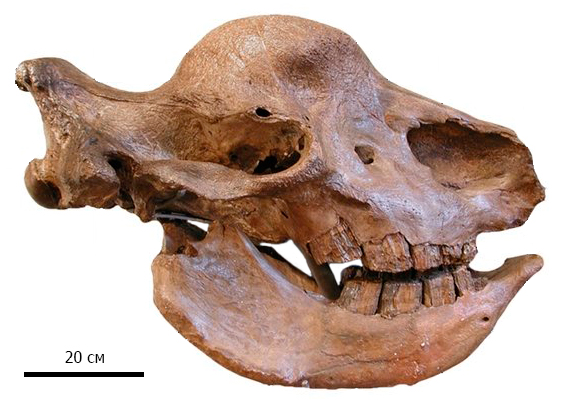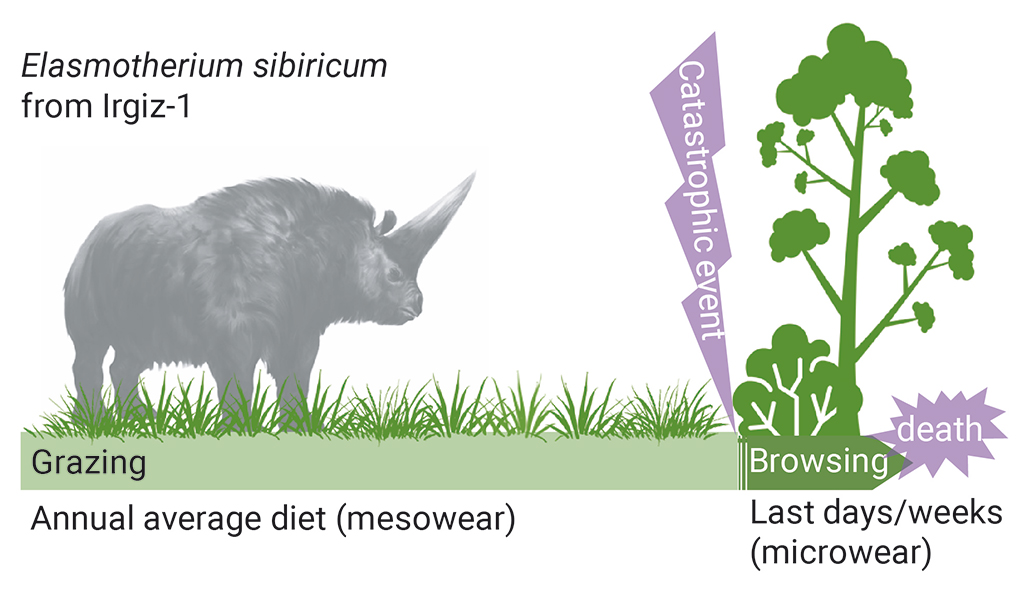The now extinct giant rhinoceros, Elasmotherium sibiricum, also known as the ‘Siberian unicorn’, was one of the largest representatives of the formerly widely diverse family Rhinocerotidae. It survived in Eastern Europe and Central Asia until at least 39,000. This rhinoceros was the second largest among rhinoceroses. It weighed around 3500 kg and was over two meters high at the withers. The ecology of that extinct species is poorly known. According to its morphology (high crowned teeth), it should be expected to be a true grazer, exclusively feeding on grass. The objective of this research was to provide quantitative data to reconstruct the paleodiet of the elasmotheres. Two dietary proxies were used, tooth mesowear that indicate the ‘average’ diet over the last years of life of an individual, and microwear, a short-term signal, that reflects the diet over the last days or weeks before death. The fossil materials studied are coming from Irgiz 1, a site located in the Saratov region (Russia). The site is dated to the end of the Middle Pleistocene and the beginning of the Upper Pleistocene, about 120,000 years ago. Irgiz 1 is a paleontological site, and the elasmotheres there certainly died from natural causes.
The long-term mesowear signal indicates that elasmotheres had a very abrasive diet i.e. it was grazing, as it could be expected from its dental morphology. The microwear pattern observed on the teeth revealed an unexpected browsing diet at the time of death (last days/weeks). This discrepancy between the two dietary proxies indicates it experienced a change in diet that occurred shortly before death. All the individuals recovered from Irgiz 1 shifted from a grazing to a browsing diet during the last days or weeks before they died. This sudden change in diet could be related to a catastrophic mortality event, perhaps related to the sudden accumulation of snow and ice coating (‘dzud’), limited the availability of grass and forced them to shift towards shrub /tree foliage that was still accessible. This first study of tooth meso- and microwear on elasmotheres provided unique data which allows us to broaden our knowledge about the diet of these animals.

